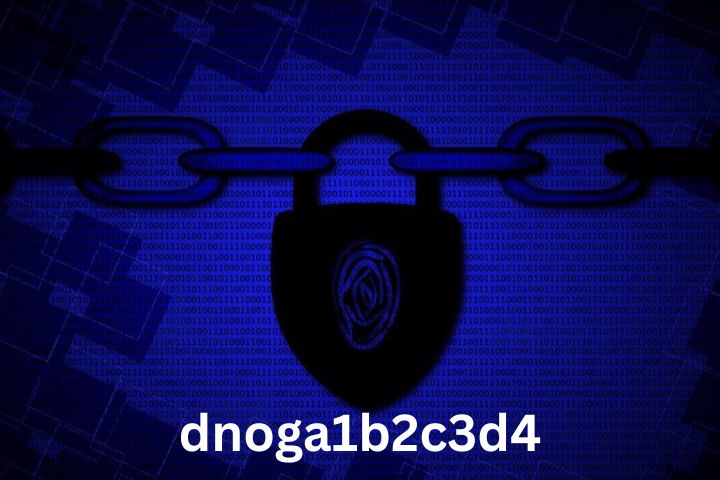In today’s fast-evolving digital world, mysterious combinations of letters and numbers often represent something far more meaningful than they appear. One such intriguing term gaining attention is dnoga1b2c3d4. At first glance, it might look like a random code, but it holds significant implications in the fields of cybersecurity, data organization, and digital identity systems. This article explores what dnoga1b2c3d4 represents, how it functions, and why understanding such identifiers is essential for anyone navigating the modern digital space.
What Is dnoga1b2c3d4?
The term dnoga1b2c3d4 can be understood as a digital identifier — a structured sequence designed to encode specific information about users, devices, or systems. In many cases, alphanumeric strings like this are used in encryption, software keys, or database tagging. They ensure each entity remains unique, traceable, and secure.
Think of dnoga1b2c3d4 as a fingerprint in the digital realm. It’s not meant to be easily readable by humans, but it tells a system exactly who or what it’s dealing with. From user authentication systems to network security layers, codes like dnoga1b2c3d4 play a silent but crucial role in maintaining order and preventing duplication or fraud.
The Logic Behind the Code
Every segment of a code such as dnoga1b2c3d4 often follows a specific pattern. For instance, letters may correspond to system categories or user groups, while numbers could represent versioning, time stamps, or security keys. This balance between letters and digits ensures flexibility and uniqueness.
Such identifiers are often auto-generated by algorithms that blend randomness with structured logic. This prevents predictability — a key factor in keeping systems secure. If dnoga1b2c3d4 were predictable, hackers could easily generate similar strings to bypass protections. Instead, its apparent randomness acts as a digital shield, keeping unauthorized access at bay.
Why dnoga1b2c3d4 Matters in Data Security
In cybersecurity, even the smallest code can make a massive difference. dnoga1b2c3d4 could represent an encrypted token or an API key, both of which serve as digital passports in secure communication between systems. Without identifiers like these, sensitive data could be exposed to breaches or unauthorized duplication.
Moreover, dnoga1b2c3d4 exemplifies the concept of anonymized identification. It enables systems to recognize users or components without revealing personal or sensitive details. This means privacy and functionality coexist seamlessly — a hallmark of modern digital design.
Real-World Applications of dnoga1b2c3d4
Codes like dnoga1b2c3d4 are widely used in several domains.
-
Cloud Computing: Helps track and authenticate devices connected to large-scale networks.
-
E-commerce: Used in payment gateways and transaction verifications to prevent fraud.
-
Software Licensing: Acts as a product key to control and verify legitimate software usage.
-
Blockchain Systems: Serves as unique wallet or transaction identifiers in decentralized environments.
In every scenario, dnoga1b2c3d4 ensures efficiency and trust. Its role might go unnoticed, but without such digital backbones, online systems would quickly collapse into confusion and insecurity.
The Hidden Intelligence in Randomness
At the heart of dnoga1b2c3d4 lies a paradox — it appears random, yet it’s deeply intelligent. Systems generate such codes using sophisticated algorithms that account for billions of possible combinations. This controlled randomness ensures that no two identifiers are alike, yet each remains verifiable within its own framework.
In essence, dnoga1b2c3d4 symbolizes the balance between chaos and order that defines our digital existence. It demonstrates how seemingly meaningless data can form the foundation of highly structured, secure ecosystems.
The Future of Digital Identifiers
As technology continues to evolve, identifiers like dnoga1b2c3d4 will become even more significant. With artificial intelligence, IoT devices, and decentralized networks expanding rapidly, digital codes will need to handle greater complexity and interoperability. Future identifiers may include embedded biometric markers, adaptive encryption, or even AI-generated context sensitivity.
However, the core principles will remain unchanged — uniqueness, security, and traceability. dnoga1b2c3d4 is a reflection of these timeless pillars, embodying how far digital intelligence has come and where it’s heading next.
Conclusion
dnoga1b2c3d4 is more than a random string — it’s a silent guardian of identity, security, and structure in an interconnected digital world. From securing online payments to authenticating cloud systems, such identifiers make the internet function safely and smoothly. Understanding their purpose helps us appreciate the invisible architecture supporting our everyday digital interactions.
In the end, dnoga1b2c3d4 reminds us that even in a world filled with complexity, simplicity in structure and logic can make all the difference.
